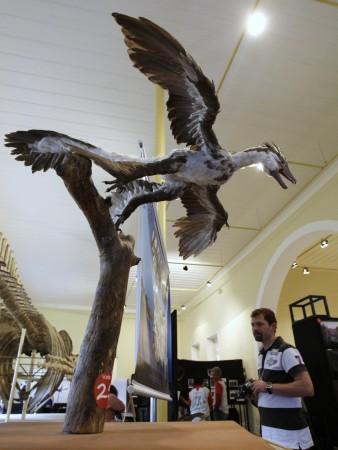
Microraptor, a small flying dinosaur, was a complete hunter with an ability to catch fish, finds a new study. It was previously thought that the microraptor lived on trees and fed exclusively on other birds and squirrel-sized mammals.
But the discovery of the fossil remains of a microraptor in China has revealed the hunting abilities of the microraptor. The fossilized specimen was found in a volcanic ash which helped scientists to identify its stomach content of fish easily. "We were very fortunate that this Microraptor was found in volcanic ash and its stomach content of fish was easily identified," University of Alberta paleontology graduate student Scott Persons said in a statement.
This is the first evidence of a flying raptor (a member of the Dromaeosaur family) that successfully preyed on fish.
Microraptor is a small feathered dinosaur that roamed the forests of China during the early Cretaceous period, some 130 million years ago. Earlier studies have suggested that the pigeon-sized, four-winged dinosaur lived in trees and fed on birds and other tree-dwelling animals.
A more detailed analysis of the fossilised specimen of the microraptor in China revealed that the prehistoric animal had teeth that were well adapted to catch slippery, wiggling prey like fish. Researchers found that the microraptor's teeth were serrated on one side and were angled forwards.
"Now we know that Microraptor operated in varied terrain and had a varied diet," Persons said. "It took advantage of a variety of prey in the wet, forested environment that was China during the early Cretaceous period, 120 million years ago."
Persons also revealed that the microraptor had long feathers on its forearms, hind legs and tail and was capable of short, controlled flights.
The details of the findings are published in the journal Evolution.

















